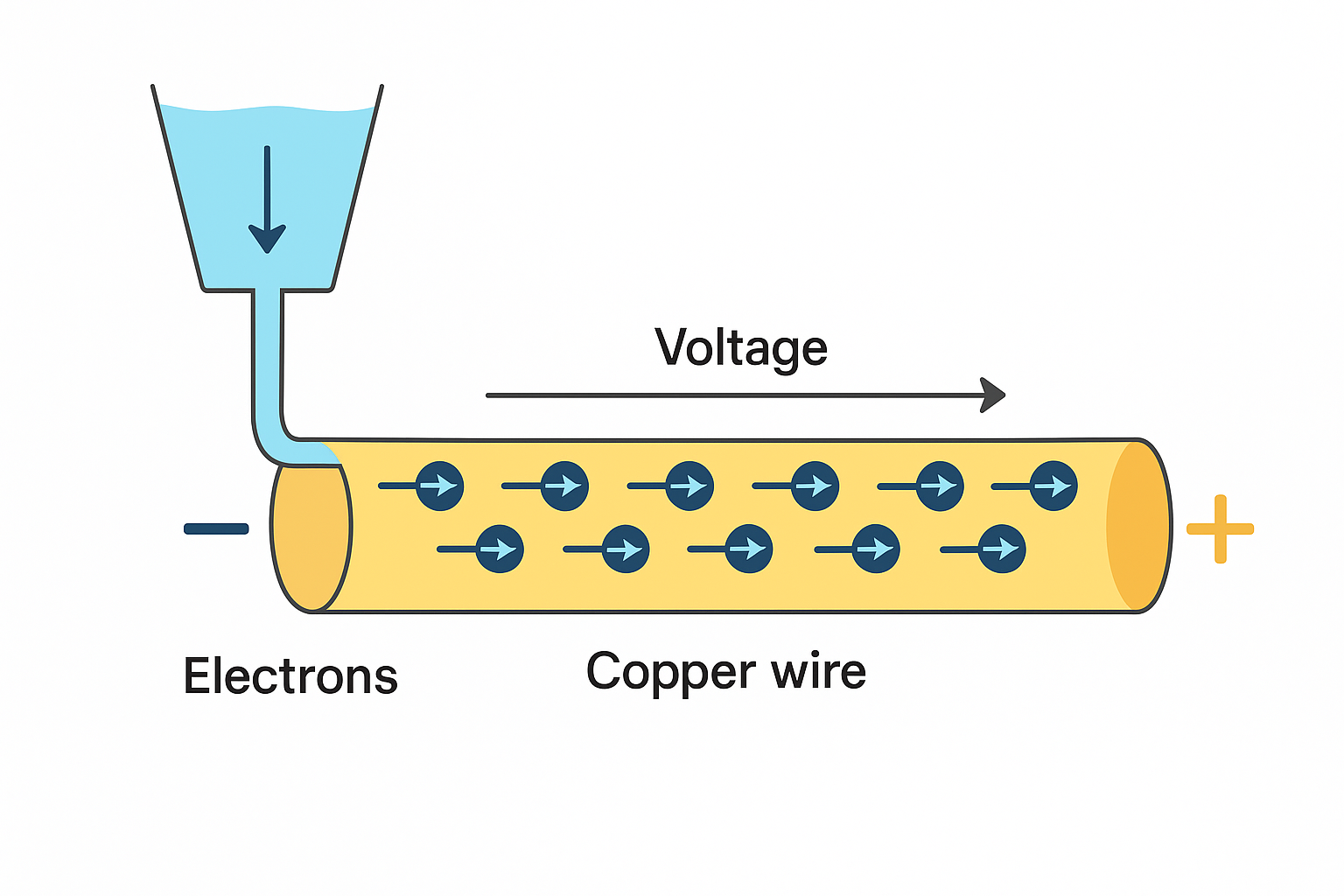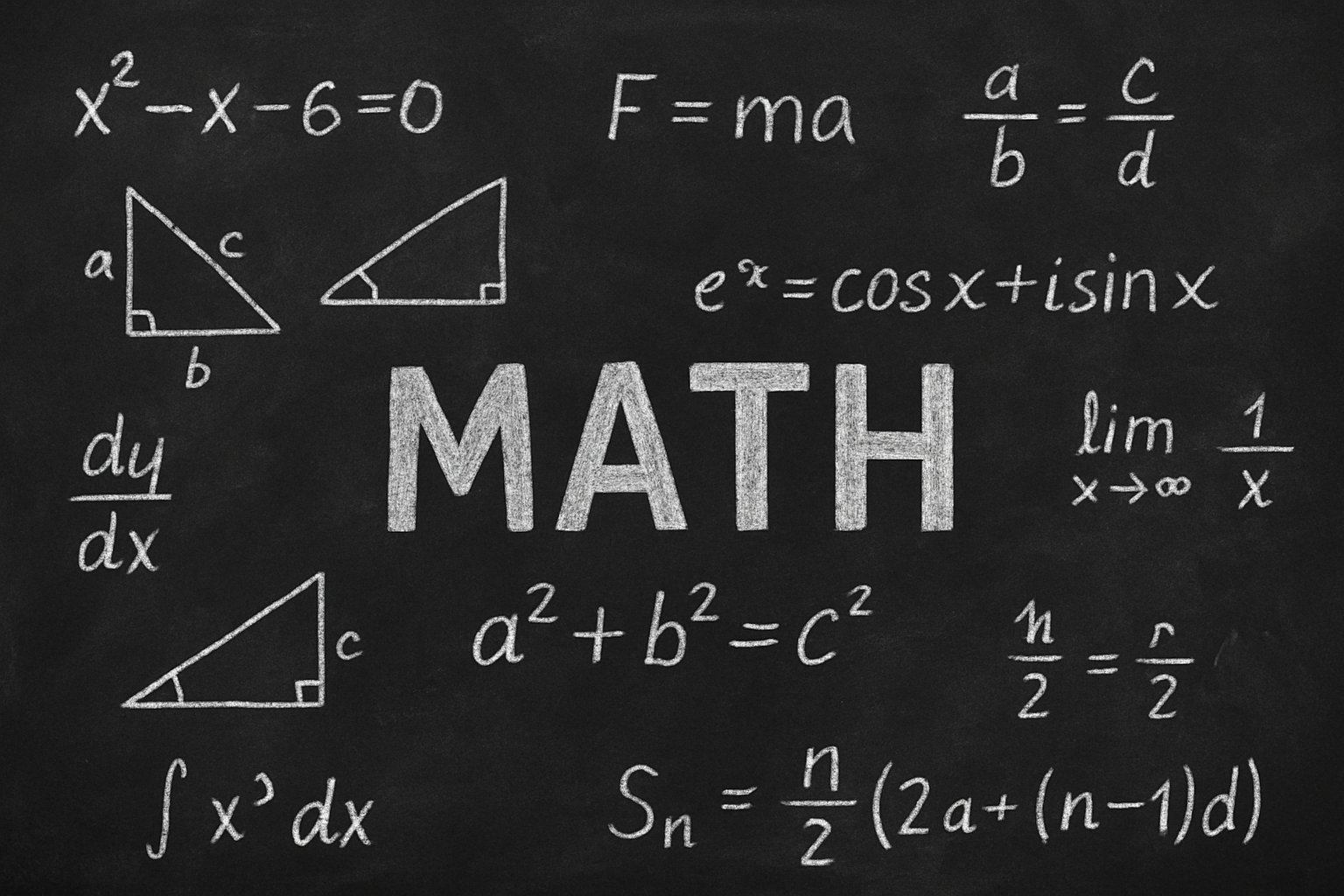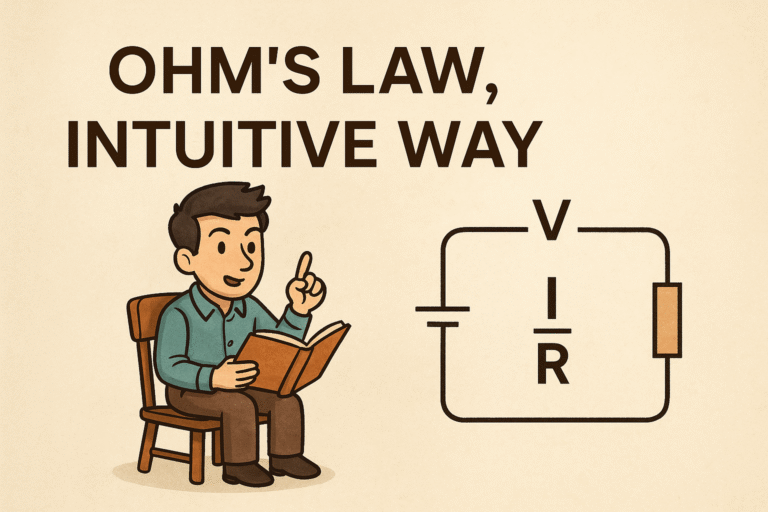Understanding Voltage, Current, and Resistance — The Simple Way
In this blog, I’m not going to discuss dry formulas. I’ll make things as simple as I can, because—
“Simplicity is the ultimate sophistication.”
~ Leonardo da Vinci
When we hear someone say that a battery is 7 volts, that doesn’t mean it’s producing current, because current is a different thing altogether. We’ll discuss that later.
Voltage is nothing more than the push we give to the electrons that are already inside the copper wire. It’s just like when a tank of water is placed at a height—the higher the tank, the stronger the push (voltage) we get.
But one thing to remember here is that voltage itself doesn’t do anything. Just like a water tank doesn’t move water on its own, it only gives the push to the water (electrons) already inside the pipe (the wire).
Let me pause here. I’m currently learning Electrical Engineering on my own. When I first read that electrons are already in the wire, my mind blew up—it felt like magic, a deep mystery finally revealed.
Why am I calling it mysterious? Because on the atomic level, everything is in continuous vibration—nothing is constant, nothing stands still. Everything in the universe is always changing, always alive.
Now that you have the basic analogy, you can think of voltage simply as push—the stronger the push, the more electrons (like water) will flow through the wire (the pipe).
Here’s where it gets interesting. Before applying voltage, electrons are still vibrating, but not in any particular direction. After voltage is applied, they all—around trillions of them—start drifting together in one direction, from the negative to the positive terminal of the power source, like a synchronized wave of movement.
A resistor is nothing more than a way to drop voltage in a circuit. But one tip I want to give you personally—don’t take my words as they are. Use your imagination, because that’s the greatest superpower nature has given you. It’s the same gift that great minds like Albert Einstein and Nikola Tesla used to see what others couldn’t.
The idea of resistance is simple: the larger the resistance (the block), the smaller the amount of current that will flow through the circuit, and vice versa. Whether you’re a physicist, an engineer, or just a curious hobbyist—it doesn’t matter. I encourage you to experience it yourself.
Playing with voltage, current, and resistors practically will give you more wisdom than any theory ever can. Think of Nikola Tesla, who understood nature by touching it, not just by thinking about it.
I apologize for making that bold statement about doing experiments—I haven’t done it yet myself. My electric kit is on its way and will reach my doorstep soon. Once I start, I’ll try my best to document it here on this blog.
Don’t run after formulas; they will drain your imagination. Start with what nature is doing, and then use math—or what we call formulas—to define it. Not the other way around.
One thing I forgot to add earlier is that the energy produced by a voltage source is the same thing, just measured in different units. For example, when we use a 3V battery, it means it’s providing 3 joules of energy per coulomb. Think of a coulomb as a bag full of millions of electrons flowing through the circuit.
No matter where in the world you are, if you have curiosity, nothing can stop you from discovering the fundamental truths of nature.
Sending love from Pakistan—from a tiny room with my computer, math, physics, electricity theory, and experiments soon to begin.
Goodbye.
— Zulqarnain







